Dorymyrmex bicolor Ants and Squash Blossoms
Watching Dorymyrmex Bicolor ants drinking nectar from Squash blossoms in our Arizona garden
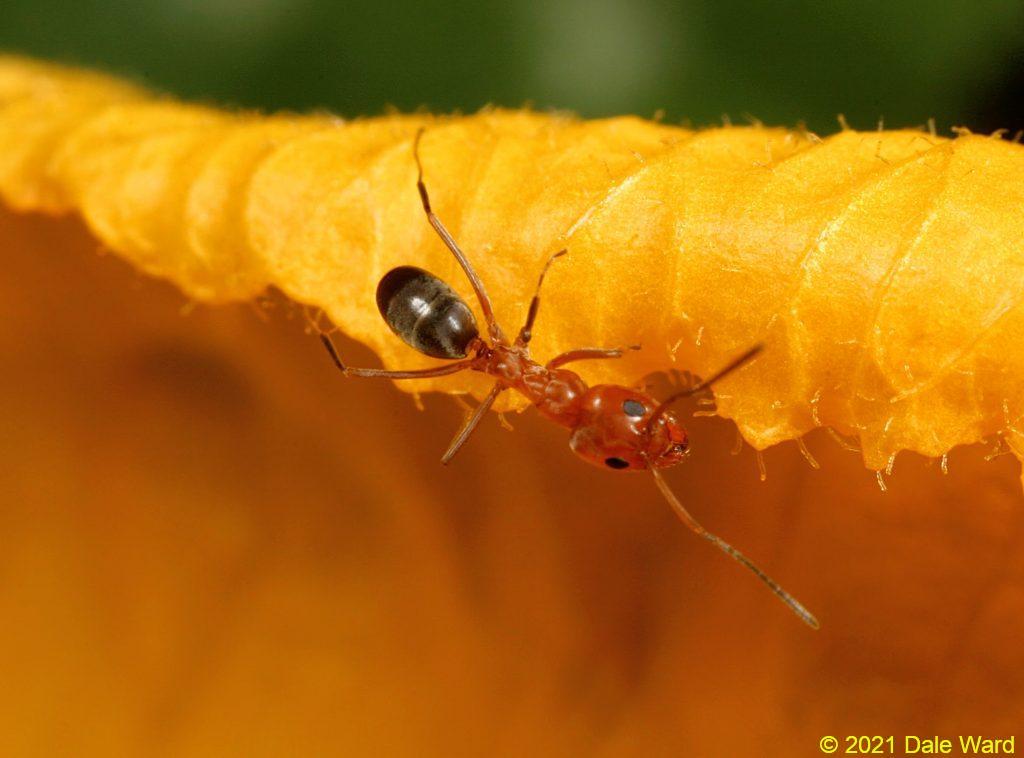 _Dorymyrmex bicolor_ on the Squash Blossom petal margin.
_Dorymyrmex bicolor_ on the Squash Blossom petal margin.
In June of 2004, I was poking around in our backyard garden in Tucson, Arizona. The squash plants were flowering, and I was having fun looking at their enormous flowers. I noticed that that some of the flowers were being visited by red-and-black ants.
These ants were Dorymyrmex bicolor, an ant that was very common in our yard. Dorymyrmex bicolor is an member of the Dolichoderinae - an ant subfamily that doesn’t have stings, but rather can release a fruity/unpleasant odor from their anal gland when they wish to do so. I think the chemical must be especially unpleasant for creatures that are closer to the same size as Dolichoderine ants - other ants have a notably negative reaction to the odor.
These ants would nest in open areas of our yard. Sometimes they’d nest at the edge of large rocks, but more often just out in the open gravel. They were very common.
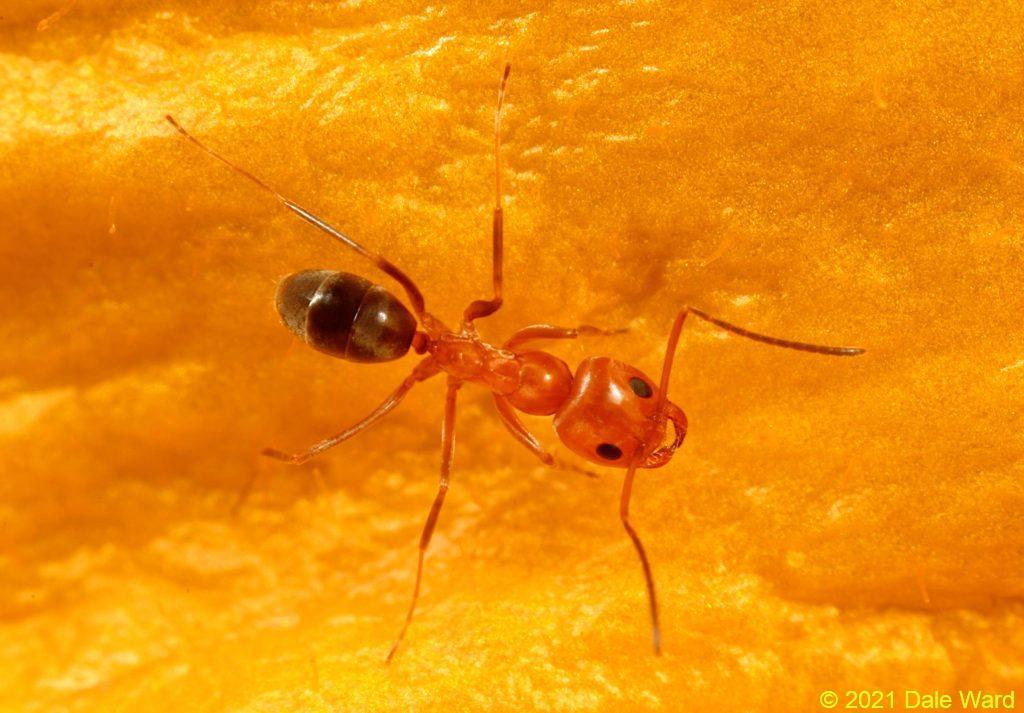 _Dorymyrmex bicolor_ on Squash Blossom petal. This ant is probably on her way into the blossom - her gaster is not swollen with nectar.
_Dorymyrmex bicolor_ on Squash Blossom petal. This ant is probably on her way into the blossom - her gaster is not swollen with nectar.
And they seemed to love sugar. If there were leafhoppers or aphids excreting sugary honeydew, there was a good chance that Dorymyrmex bicolor would be tending the aphids. If there were active extrafloral nectaries on some of the plants in our yard, Dorymyrmex bicolor would be all over it.
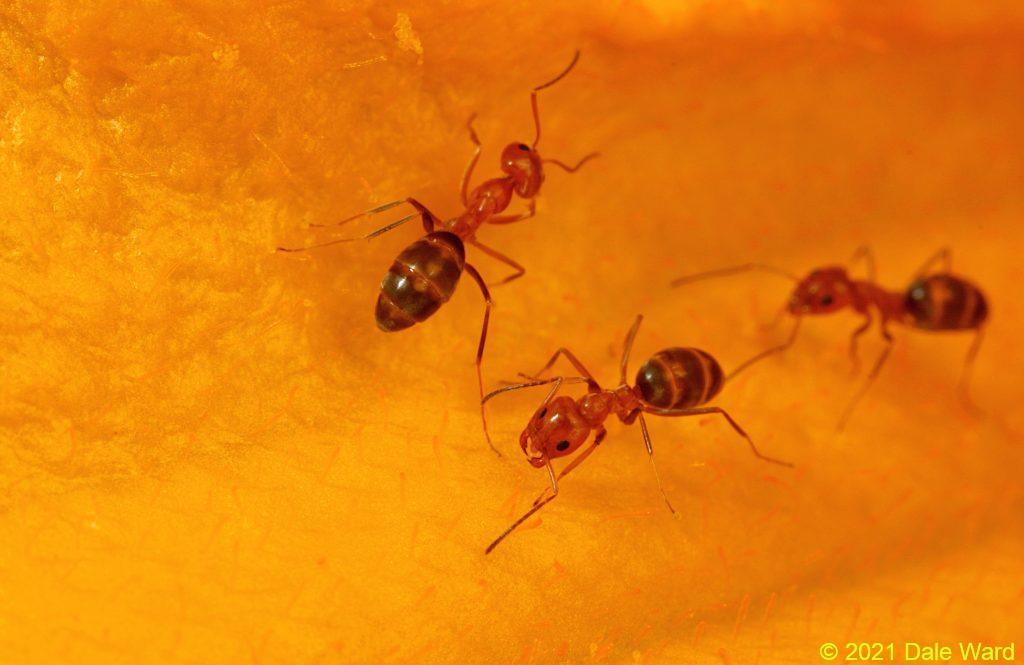 _Dorymyrmex bicolor_ workers in Squash Blossom
_Dorymyrmex bicolor_ workers in Squash Blossom
They reminded me a lot of sugar-addicted toddlers, running around trying to get their next fix of simple high-fructose corn syrup.
So what were they doing on the Squash blossoms?
As I watched the ants, I saw that the ants that were going into the flower had ‘normal’ looking gasters (abdomens) - they were the usual ovoid shape, and the armour-plate tergites and sternites of the gasters were touching or overlapping.
The ants that were coming out of the flower, though, had gasters that were so distended that the membranes between the tergites were stretched out. The ants’ gasters were as swollen and distended as raisins that have been soaking in water.
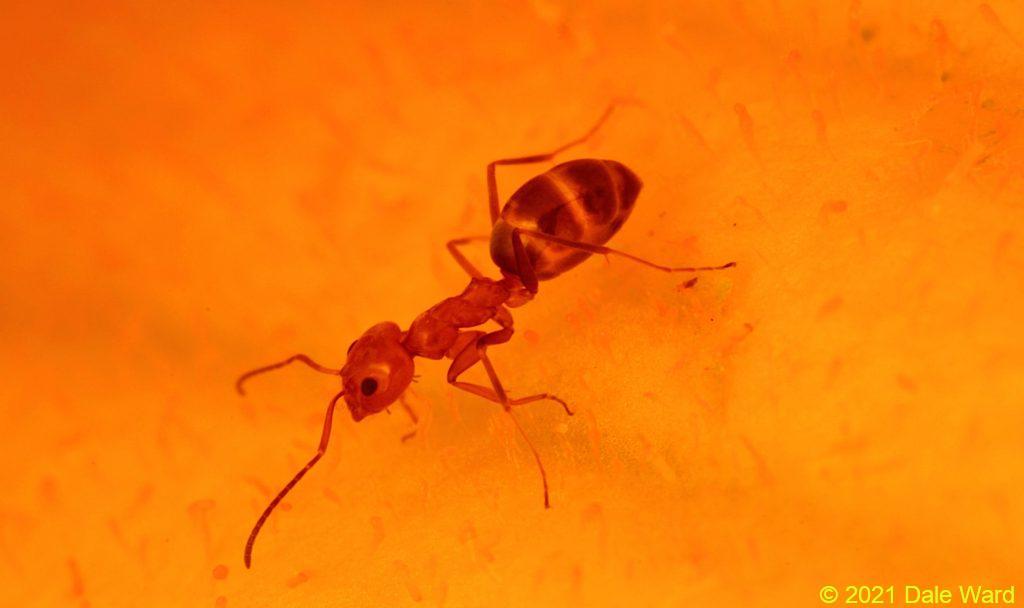 _Dorymyrmex bicolor_ in Squash Blossom. Note how swollen her gaster is with imbibed nectar - it’s stretched so far that you can see the membranes between the ‘armour plates’.
_Dorymyrmex bicolor_ in Squash Blossom. Note how swollen her gaster is with imbibed nectar - it’s stretched so far that you can see the membranes between the ‘armour plates’.
As I looked into the squash flowers, I could see that the ants were clustering around the bases of the flower stigmata. Ah - there were nectaries there, and the ants were drinking the nectar.
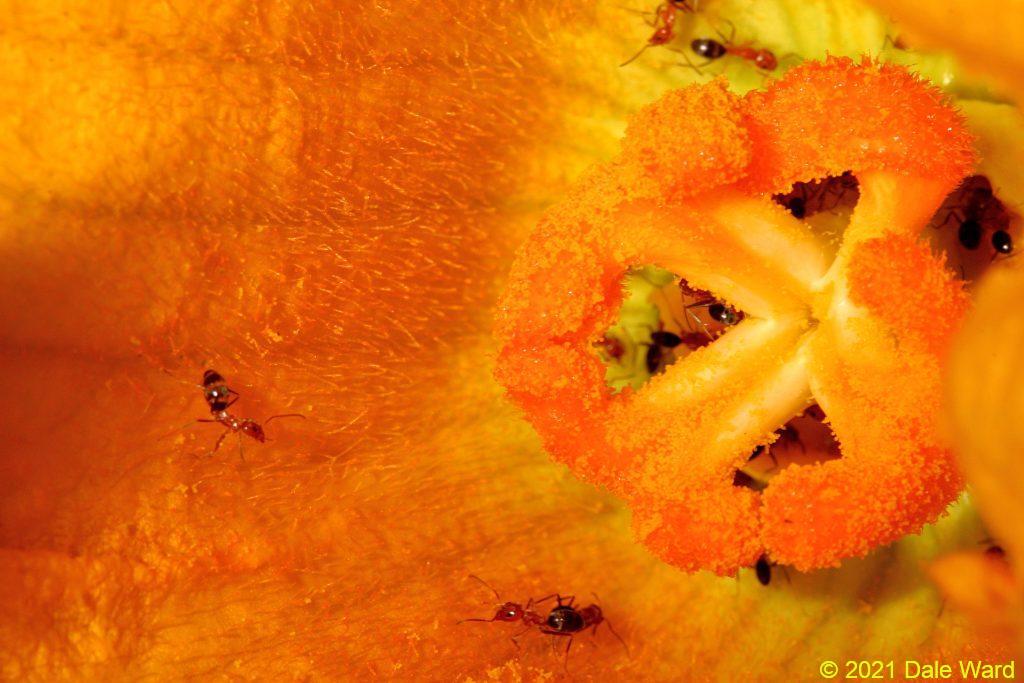 _Dorymyrmex bicolor_ ants in a Squash Blossom. They are drinking from the nectar wells at the base of the stigma at the right of the photo. On the left, note the inward pointing hairs on the flower petal that the ants are attempting to navigate. I expect that those inward-pointing hairs will tend to keep pollinators inside the flower, making them more likely to get pollen on their bodies.
_Dorymyrmex bicolor_ ants in a Squash Blossom. They are drinking from the nectar wells at the base of the stigma at the right of the photo. On the left, note the inward pointing hairs on the flower petal that the ants are attempting to navigate. I expect that those inward-pointing hairs will tend to keep pollinators inside the flower, making them more likely to get pollen on their bodies.
The nectaries produce sugar for the Squash pollinators, often a type of bee. The bee has to brush against the stigmata and gets covered in pollen as it tries to get at the nectaries. Then the bee flies to another flower, and the pollen gets transferred.
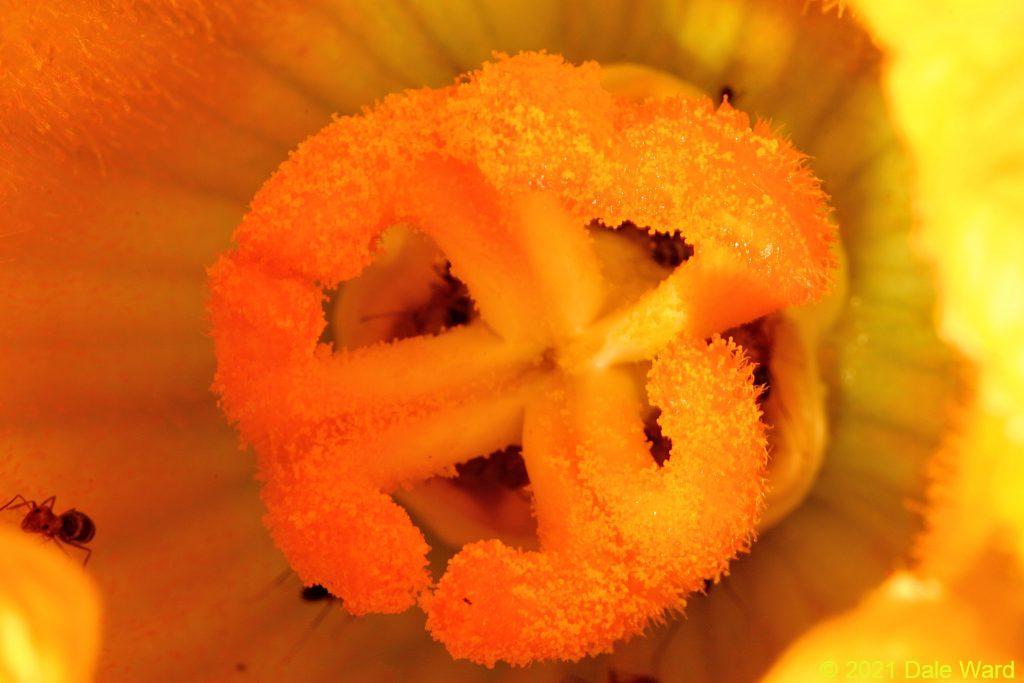 Closeup of pollen-covered stigma of Squash blossom. If you look through the gaps in the stigma, you can see the nectar wells and the _Dorymyrmex bicolor_ ants drinking.
Closeup of pollen-covered stigma of Squash blossom. If you look through the gaps in the stigma, you can see the nectar wells and the _Dorymyrmex bicolor_ ants drinking.
I’d not seen this before, but the nectaries in the Squash blossoms were almost like little mading pools full of sugary syrup. The ants were gorging on the nectar.
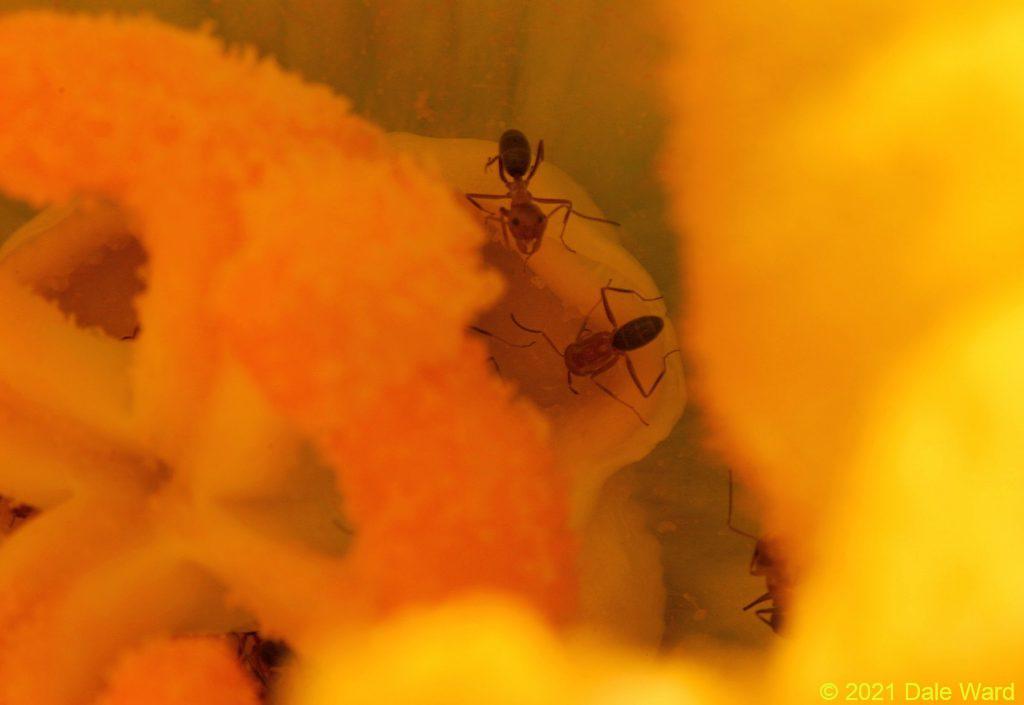 _Dorymyrmex bicolor_ drinking nectar in a Squash Blossom. The nectaries are like pools of sugary syrup water.
_Dorymyrmex bicolor_ drinking nectar in a Squash Blossom. The nectaries are like pools of sugary syrup water.
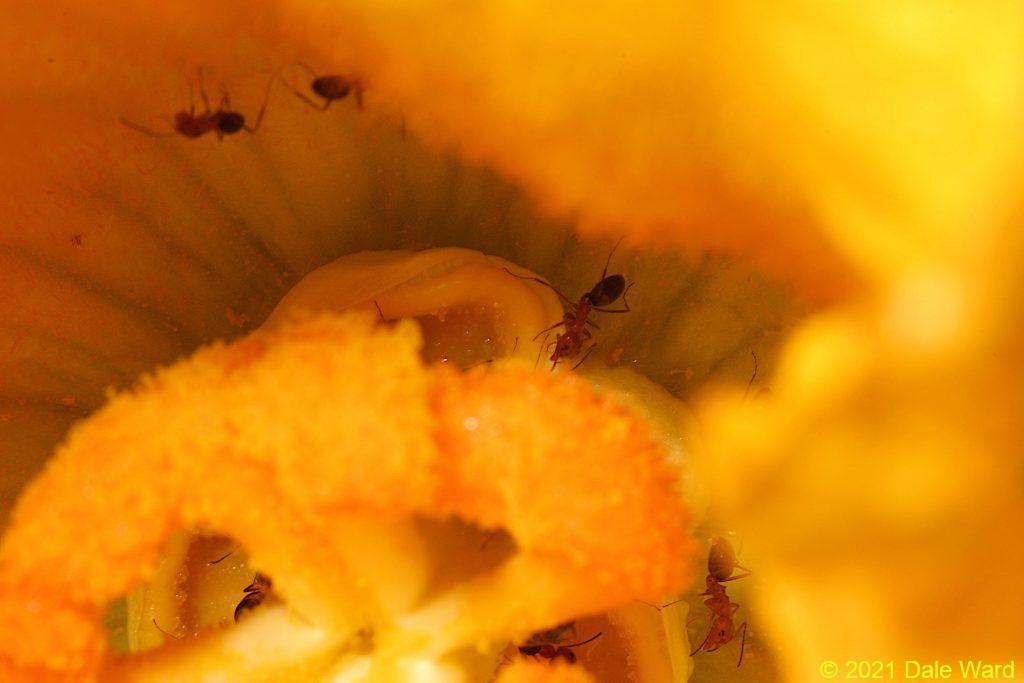 _Dorymyrmex bicolor_ and nectary in Squash Blossom.
_Dorymyrmex bicolor_ and nectary in Squash Blossom.
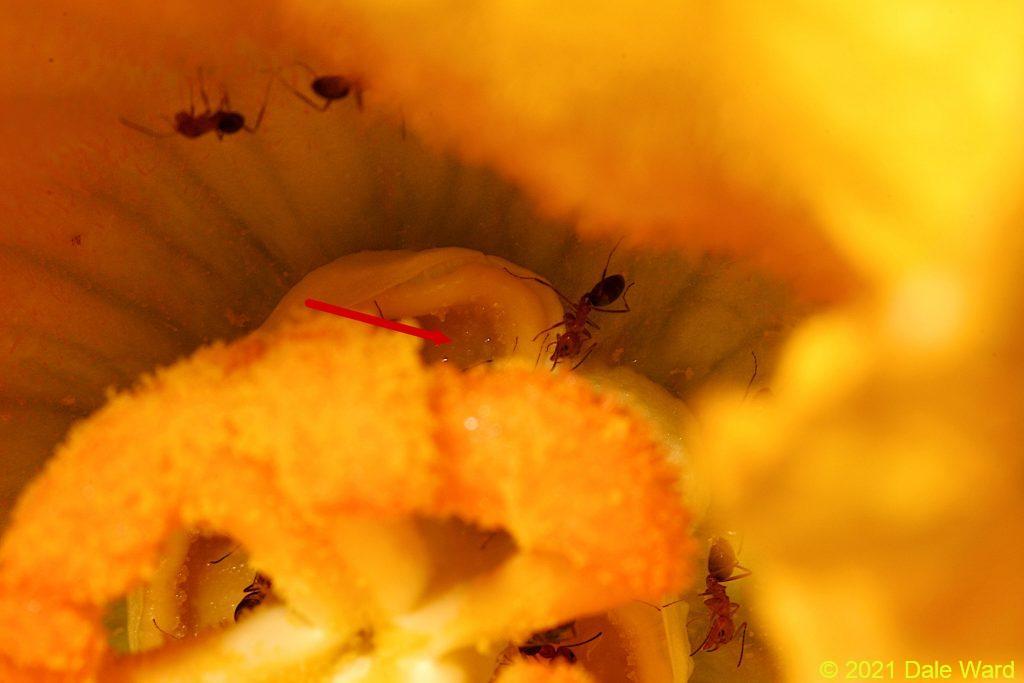 Red arrow points to one of the nectaries in the Squash blossom. You can see how it’s glistening - moist with sugary nectar.
Red arrow points to one of the nectaries in the Squash blossom. You can see how it’s glistening - moist with sugary nectar.
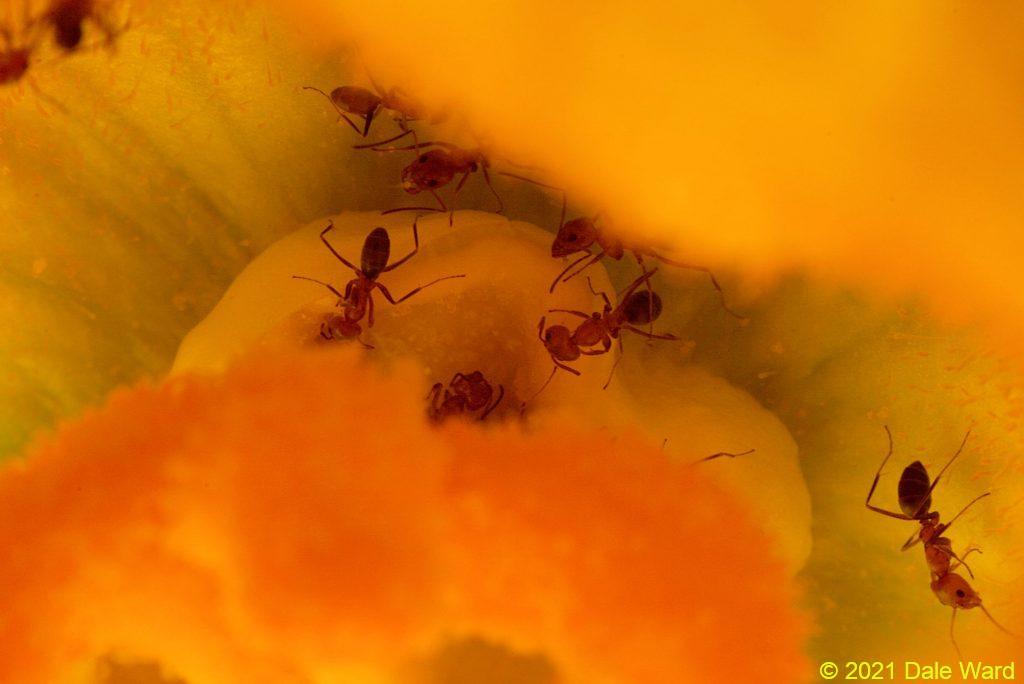 _Dorymyrmex bicolor_ workers in Squash Blossom. The workers are drinking out of the nectar wells.
_Dorymyrmex bicolor_ workers in Squash Blossom. The workers are drinking out of the nectar wells.
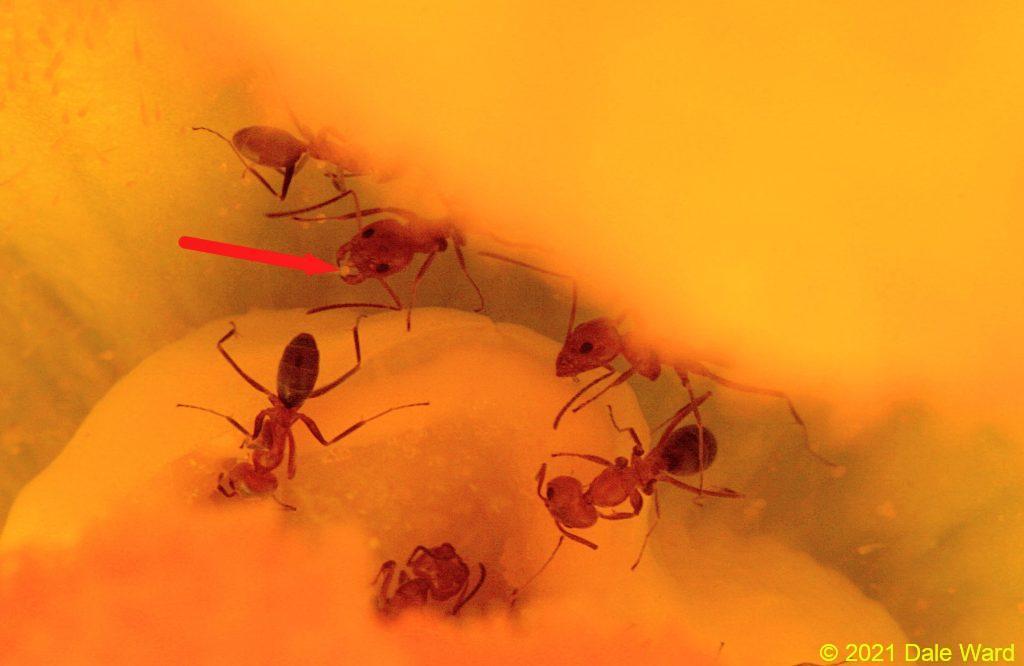 _Dorymyrmex bicolor_ workers in a Squash blossom. Red arrow marks a worker that is carrying a pollen grain in her mandibles.
_Dorymyrmex bicolor_ workers in a Squash blossom. Red arrow marks a worker that is carrying a pollen grain in her mandibles.
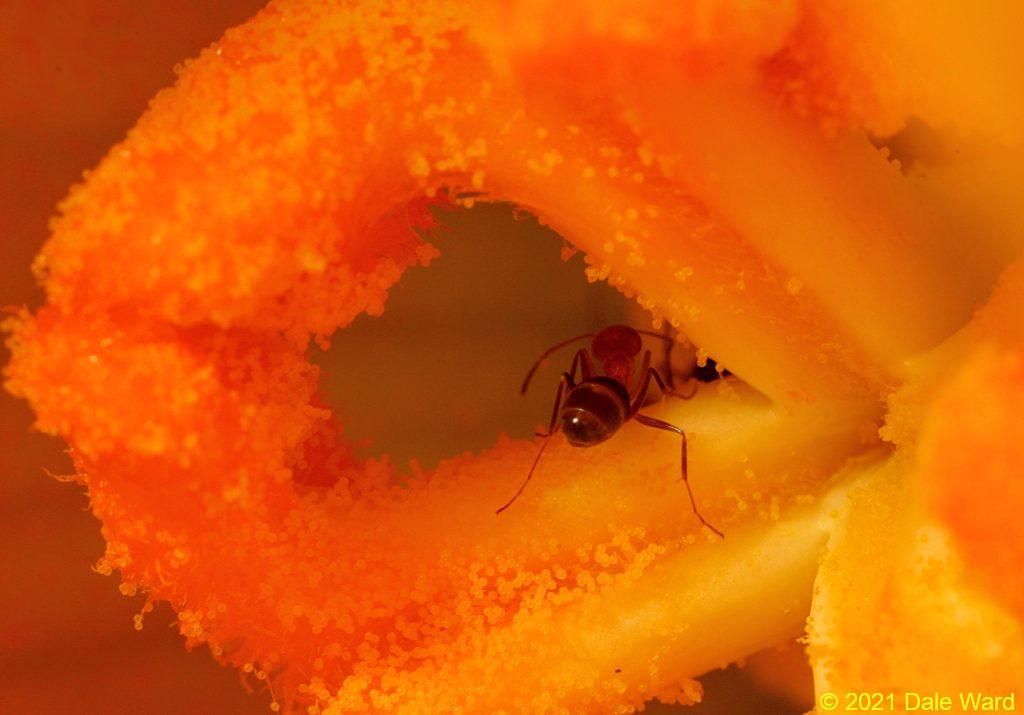 _Dorymyrmex bicolor_ on Squash flower stigma. You can see the round pollen grains covering the stigma. There is at least one pollen grain adhering to the antenna of the ant. I don’t think the ants are very efficient pollinators, however. It was unusual to see pollen adhering to them.
_Dorymyrmex bicolor_ on Squash flower stigma. You can see the round pollen grains covering the stigma. There is at least one pollen grain adhering to the antenna of the ant. I don’t think the ants are very efficient pollinators, however. It was unusual to see pollen adhering to them.
I would be surprised if Dorymyrmex bicolor is a significant pollinator of the Squash flowers. I only saw a couple of instances where the workers were carrying pollen grains.
I would also expect that if a pollinator such as a Squash Bee did arrive, it would have to compete with the ants for the nectar.
I wonder if the ants do depress pollination of the Squash blossoms. We certainly didn’t get a lot of Squash out of our garden :)